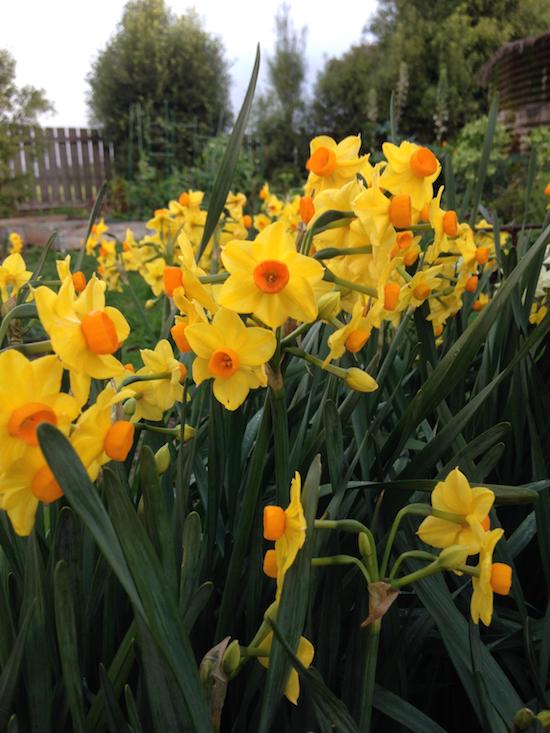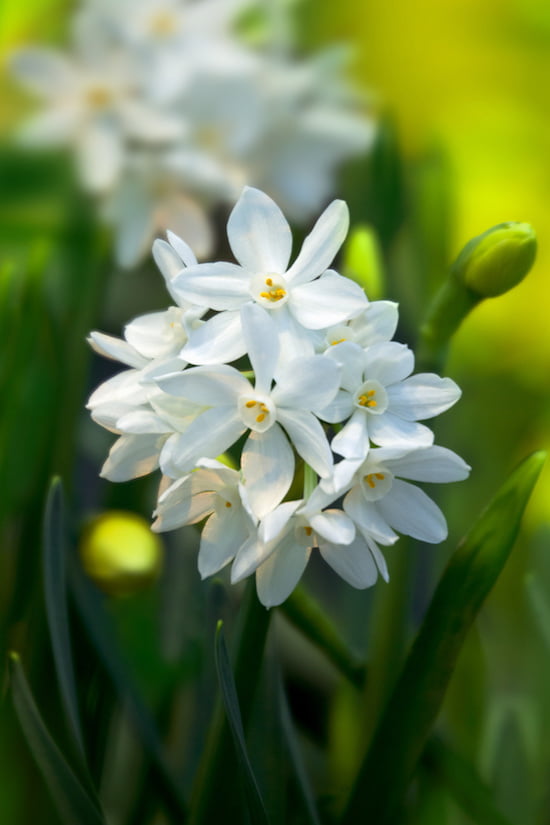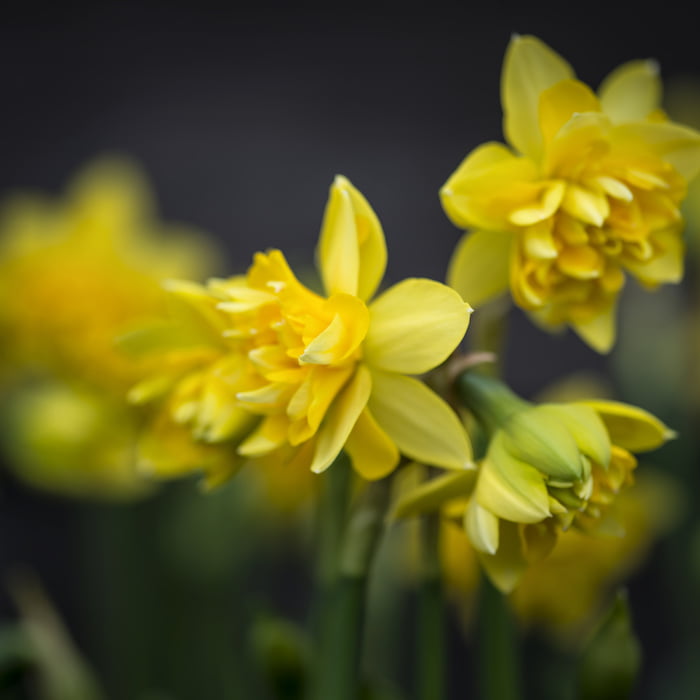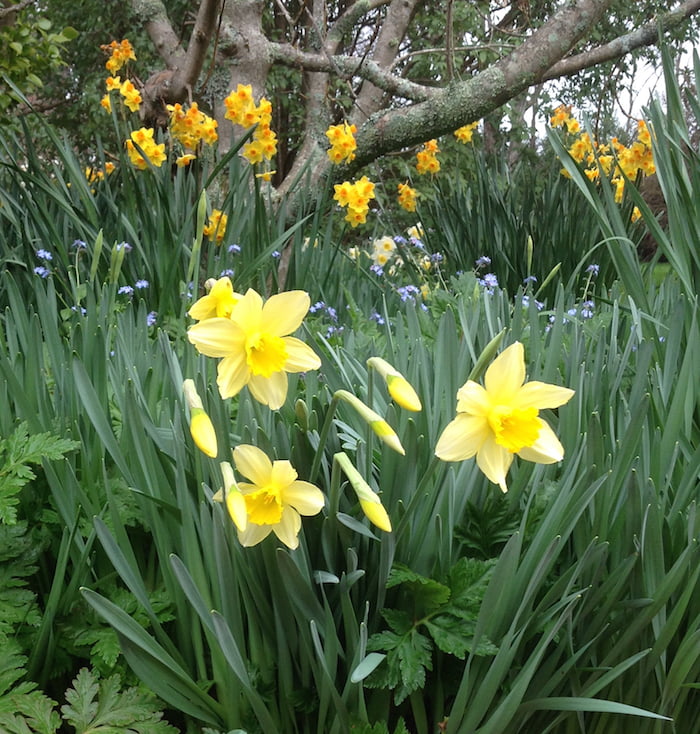Jonquils are in full bloom in my garden and the scent from a bunch I’ve picked is wafting through the kitchen. Jonquils are thought of as spring bulbs but these fragrant, yellow-flowered bulbs bloom in winter in my garden. In warmer zones than my Tasmanian garden they can begin to flower in late autumn.
The stout stems of the early blooming narcissus have clusters of small flowers. For early flowering select the yellow jonquil ‘Soleil d’Or’ (usually called jonquil), the double creamy white double and highly fragrant ‘Erlicheer’, which lives up to its name by flowering in late winter, or the easy going paperwhites.

Jonquils in the home garden. Image, Jennifer Stackhouse
These early narcissus continue to bloom until daffodils take over in late winter or early spring. The last of the tribe to bloom is usually the pheasant’s eye or poet’s narcissus (Narcissus poeticus).
If you are missing out on narcissus in flower, look for pots in flower at garden centres or make a note to plant bulbs next year. Narcissus and other spring-flowering bulbs are planted throughout autumn, but take a hint from nature and get jonquils and paperwhites in early to enjoy these cheery blooms on a cold winter day.

Daffodil Paperwhite ‘Ziva Tazetta’ in spring garden. Image Adobe Stock Photo
All narcissus can be planted to naturalise under deciduous trees and shrubs, on embankments, or to add a burst of colour in garden areas that are bare in winter such as in the rose garden.
The rule of thumb for planting most winter- and spring-flowering bulbs including narcissus is pointy side up at a depth that’s at least twice the length of the bulb. It is important to plant bulbs at their optimum depth as shallow bulbs can become hot in the ground and may not perform well while bulbs that are down too deep can run out of energy before they break through the surface. Bulbs often work their way closer to the surface over time where they are prone to drying out and also being scratched out of the soil by blackbirds. I gather dislodged bulbs for replanting and also lay down fronds of tree fern criss crossed over the soil to protect it from the zealous birds.

Beautiful narcissus tete boucle buttercup daffodils in full bloom. Image Adobe Stock Photo
Bulbs that break the planting rules are anemones, which are planted pointy side down; ranunculus, which are planted claws down; and large bulbs such as hippeastrum or soft bulbs such as lachenalias and liliums, that are planted at the surface, not buried. All packaged bulbs come with planting instructions so refer to the label at planting to be sure of the correct depth and orientation for each variety.
Bulbs do best in well-drained soil that’s been enriched with organic matter such as well-rotted compost. They need a spot that’s sunny in winter and spring but can tolerate increasing shade after flowering. Cover the planting area with a 5cm layer of loose mulch after planting to keep the soil cool and weed free.
Emerging shoots and flower buds should be protected against snails and slugs. This can be done by using iron-based snail bait or regularly checking for and removing any pests that are found.
Most emerging bulbs also benefit from an application of high-potash flowering fertiliser as they begin to grow and regular watering if it is dry.

Daffodils early spring. Image Adobe Stock Photo
For bulbs that are left in the ground to multiply and re-flower the following year, it is important to nourish the foliage after flowering using pelletised or liquid plant food. Allow the foliage to die back naturally as it is the power house that’s replenishing starches within the bulb and forming the next year’s flower.
Where space is tight, bulbs can be grown in plastic pots sunk into the ground and then lifted after flowering finishes and allowed to dieback naturally in an out-of-the-way part of the garden. This is a handy technique for daffodils and tulips, which have large, often floppy leav
